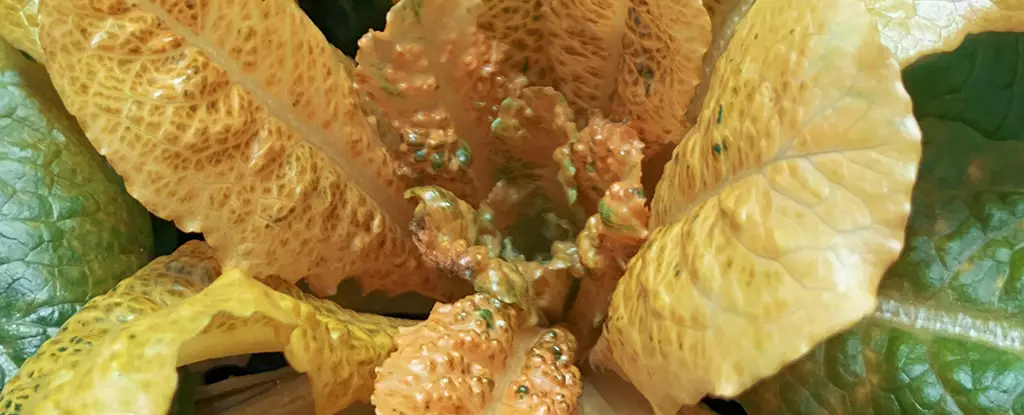In recent years, the intersection of biotechnology and nutrition has captured global attention, particularly with innovations that promise to enhance food security and health outcomes. A groundbreaking advancement has emerged from Valencia Polytechnic University (UPV) in Spain, where scientists have successfully engineered a new variety of lettuce, dubbed ‘golden lettuce.’ This transformation not only addresses vitamin A deficiencies but also showcases the potential of genetic engineering to improve diets worldwide.
Vitamin A is an essential nutrient crucial for multiple bodily functions, including immune response, vision, and proper growth and development. However, the reality today is that millions suffer from vitamin A deficiency, which poses severe health threats, particularly among children and pregnant women in developing countries. The innovative approach of infusing lettuce with higher levels of beta-carotene—a precursor to vitamin A—offers a practical solution to a longstanding public health issue. This initiative paves the way for other vegetables to undergo similar enhancements, expanding dietary options and improving public health statistics globally.
The Genetic Engineering Process
The journey to golden lettuce began with the scientists’ significant milestone of increasing beta-carotene levels in the tobacco relative, Nicotiana benthamiana. This foundational success allowed them to shift their focus to Lactuca sativa, the common lettuce, where they implemented strategic genetic modifications. Molecular biologist Manuel Rodríguez Concepción noted that traditional methods of increasing beta-carotene concentrations can inadvertently disrupt photosynthetic processes in chloroplasts, potentially compromising plant viability.
To counter this challenge, the research team developed a creative solution, redirecting the accumulation of beta-carotene to cellular compartments outside of the chloroplasts. By harnessing biotechnological techniques alongside increased light exposure, the team successfully increased the amount of beta-carotene without jeopardizing the plant’s health.
One of the pivotal techniques employed in creating the golden lettuce involved the transformation of certain chloroplasts into chromoplasts. These specialized organelles are designed for pigment storage, allowing for a much more effective capture of beta-carotene. The introduction of the gene for the bacterial enzyme crtB played a crucial role in this process, enabling the lettuce to behave like a vibrant storehouse of nutrients.
Additionally, the researchers employed high-intensity light treatments, a strategy that not only elevated beta-carotene production but also stimulated the formation of a storage unit known as plastoglobules. This trio of innovations—genetic modification, organelle conversion, and precise light exposure—resulted in enhanced bioaccessibility of the nutrient, meaning that when consumed, beta-carotene is more readily converted into vitamin A in the intestines. The yellow color that characterizes the lettuce is a visible testament to its nutrient-enriched status.
The Future of Food Security
The implications of creating golden lettuce extend far beyond its initial appearance and biochemical changes. This scientific breakthrough could signify a turning point, particularly in regions where malnutrition and nutrient deficiencies are rampant. By fundamentally altering the nutritional content of widely consumed vegetables, we could address public health concerns on a larger scale.
As awareness grows about the nutritional value of genetically modified organisms (GMOs), the golden lettuce could serve as a model for other crops, demonstrating the viability and necessity of this technology in combating global health issues. Scientists can leverage this method to fortify various food sources, aiming for a significant reduction in vitamin deficiencies that affect hundreds of millions around the globe.
The creation of golden lettuce embodies the potential of genetic engineering to revolutionize nutrition. By providing a sustainable, innovative solution to vitamin A deficiency, researchers at UPV have opened the door to a future where enhanced vegetables can contribute to healthier populations. In addressing public health through the lens of biotechnology, we are not just reimagining nutrition; we are redefining it for generations to come. The journey of golden lettuce signifies hope—showcasing how science can assist humanity in overcoming some of its most pressing nutritional challenges.


Leave a Reply